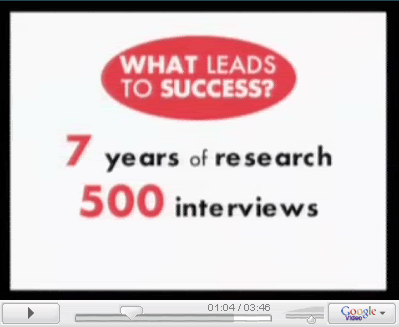Dear Friends,
I love the thought of being able to influence with integrity, one of my favorite authors on the subject of Influence is Robert B. Cialdini. I recently finished reading his new book Yes!: 50 Scientifically Proven Ways to Be Persuasive, and I would like to share some in sites with you.
From Yes!: 50 Scientifically Proven Ways to Be Persuasive
1. SCARCITY: Nearly everyone is vulnerable to some form of the principle of scarcity. Opportunities seem more valuable when they are less available. Hard-to-get things are perceived as better than easy-to-get things.
2. SOCIAL PROOF: We decide what is correct by noticing what other people think is correct. This principle applies especially to the way we determine what constitutes correct behavior. If everyone else is behaving a certain way, most assume that is the right thing to do. For example, one of the important, and largely unconscious, ways we decide what is acceptable behavior on our current job is by watching the people around us, especially the higher-ups or old timers.
3. AUTHORITY: Most of us are raised with a respect for authority, both real and implied. Sometimes, people confuse the symbols of authority (titles, appearance, possessions) with the true substance. You can put this general principle to use by citing authoritative sources to support your ideas. Look and act like an authority yourself. Be sure others know that your education and experience support your ideas. Dress like the people who are already in the positions of authority that you seek.
4. RECIPROCATION: You probably already use this principle, but it is much stronger than you suspect. You can build a sense of indebtedness in someone by delivering a number of uninvited "first favors" over time. They don't have to be tangible gifts. In today's world, useful information is one of the most valuable favors you can deliver.
5. COMMITMENT AND CONSISTENCY: Once people have made a choice or taken a stand, they are under both internal and external pressure to behave consistently with that commitment. This desire for consistency offers us all a shortcut to action.
6. LIKING: People also tend to like and trust anything familiar. The best way to build this familiarity is to have frequent, pleasant contacts. For example, if you spend three hours straight with someone you've never met before, you would get a sense of who they are. But if you divided the same time into 30-minute segments of pleasant interaction over six consecutive weeks, you would each have a much stronger and positive knowledge about the other. You have established a comfort level, familiarity, and a history with them. Their repeated, pleasant contacts with your organization's services or products help build familiarity and liking.
Want to learn more? I would like to suggest that you take some time to read Robert B. Cialdini's Yes!: 50 Scientifically Proven Ways to Be Persuasive
Thanks for spending 3 minutes with me...
The best is yet to be...
On Your Team
Jeffrey Stanton
Your Trusted Advisor For Life
347-466-3047
One of the fastest ways to build a successful referral based business is by training. Now, with me, I like to invest significant time immersing myself in training, while some people prefer to take it in bite-size chunks. Whatever your preference is, now is the best time to contact me.
If you have found this tip useful, please share it with any friends, family, colleagues and associates who you think will be interested. Feel free to print it (with credit and subscription information) and continue to enjoy the tips. I am always grateful for any comments, criticisms or other feedback that you may have. Please send them to feedback@jeffreysjournal.com


































No comments:
Post a Comment